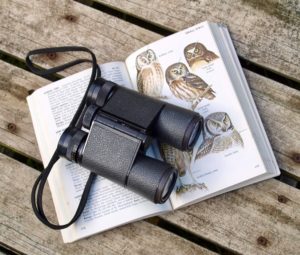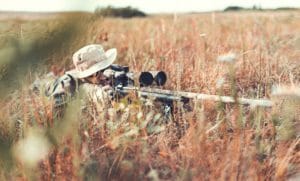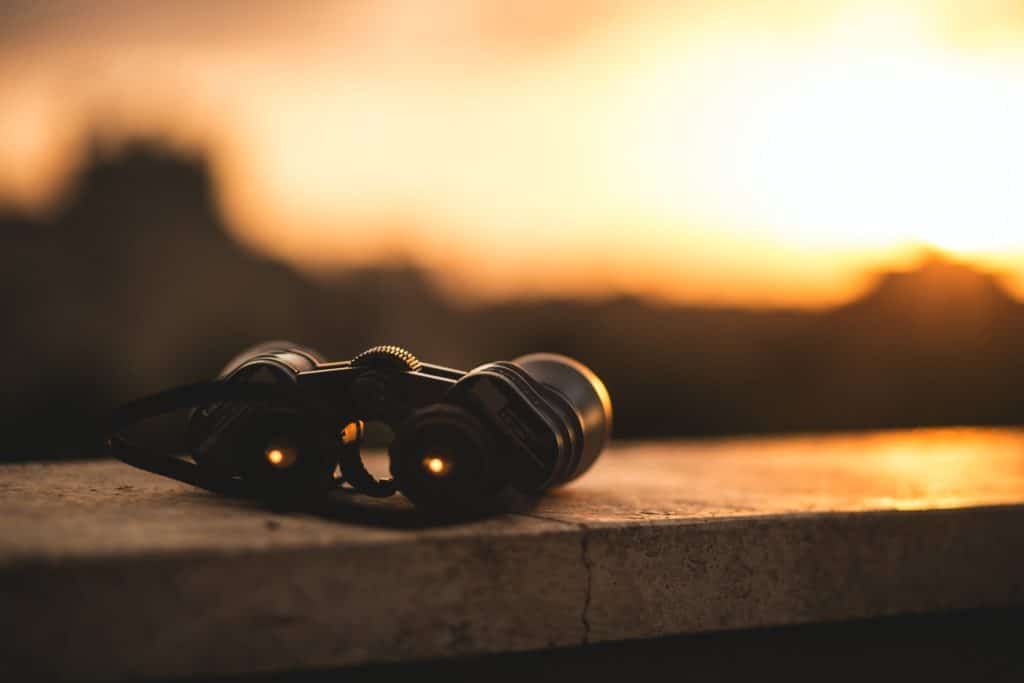For the best outdoor viewing experience, you need superior optics to help you see clear images. And, what better equipment than the best binoculars for long-distance? You can use them to watch birds, sports, the sky, landscape and wild animals from a safe distance.
In this guide, we’ll discuss the factors that make a good long-distance optic. In addition to reviewing the top products on the market— to help you make an informed decision.
Here is a brief summary of our best binoculars for long distance in 2021:
- Nikon 8252 Aculon A211 10-22x50 Zoom Binoculars – Best Overall
- Celestron - Skymaster Giant 15x70 Binoculars – Best for Astronomy
- Vortex Optics Diamondback HD Binoculars – Best Value
- Gosky 10x42 Roof Prism Binoculars – Best Compact
- Bushnell Trophy Roof Binoculars – Best for Sports
- Swarovski Optik 15x56 SLC Series – Best for Professionals
- Pentax SP 20x60 WP Binoculars – Best for Low Lighting
- Celestron 71454 Echelon 20x70 Binoculars – Best Versatility
- Vortex Optics Kaibab HD Binoculars – Best for Hunting
- SkyGenius 10x50 Powerful Binoculars – Best Price
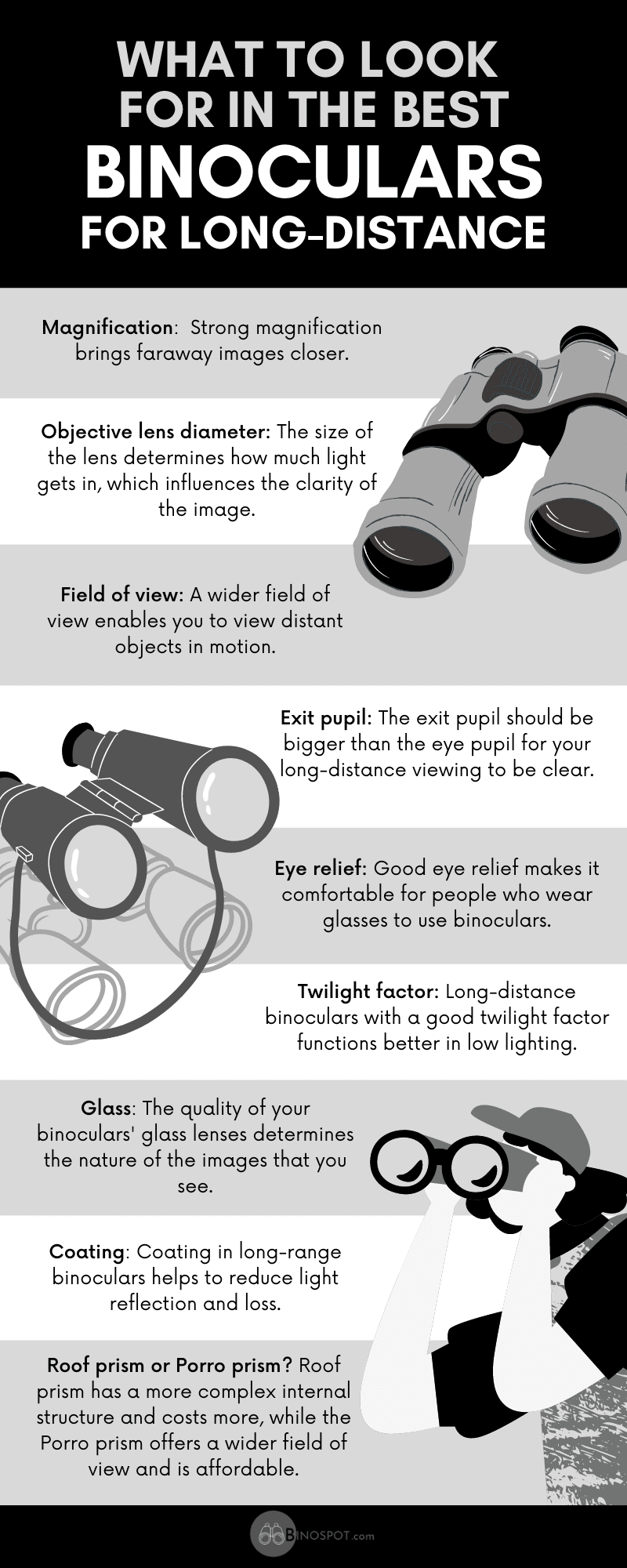
What to Look For in the Best Binoculars for Long Distance
Before you settle for a particular pair of long-distance binoculars, there are a few factors you must take into account. These include:

The Magnification
This is the binoculars’ ability to make faraway objects appear closer—the higher the magnifying power, the better the optic’s performance for long-distance viewing. To know the binoculars’ magnification, look for two numbers on top of the casing. They’re written as 10×42, 12×50, etc.
The first number is the magnification power, while the second is the objective lens diameter, which we’ll look at below.
For long-distance, high-powered binoculars, you need strong magnification to bring the images closer. For instance, if you’re using binoculars for birdwatching or to stargaze, you might have to go for a magnification of 20x or more.
But, the higher the magnification, the more sensitive to shake the image is. Any slight movement affects the image’s clarity. So, it’s important to hold the binoculars steady for better viewing—which can be challenging as most high magnification optics are bulky. Your best bet is to invest in a tripod or get a binoculars with in-built image stabilization.
If you just need the binoculars for terrestrial long-distance viewing, a magnification power of between 15x to 18x will be more convenient to handle.
The Objective Lens Diameter
The second number after magnification represents the lens diameter. For instance, in 12×50 binoculars, 50 is the objective lens diameter size in millimeters.
In short, lenses with a bigger diameter allow in more light, which helps to brighten images and make them clearer. This is particularly beneficial when you’re using the binoculars in low lighting conditions.
A lens diameter of between 50mm to 60mm would serve you perfectly for terrestrial viewing purposes. But, for astronomical use, you’ll have to go higher than 60mm. And, you should be ready to handle the bulkiness that comes with bigger objective lenses. In fact, it will be good to invest in a tripod stand.
The Field of View (FOV)
The field of view is the area that you see through the binoculars at a particular magnification. It’s calculated in feet per 100 yards. The higher the field of view, the more area you can see, both horizontally and vertically.
The more you zoom in to an objective, the smaller the FOV becomes, so long-range binoculars with a wide field of view would be ideal for viewing moving objects like wild animals or birds.
Unfortunately for most long-range optics, their high magnification inadvertently reduces the FOV. Still, there are long-distance binoculars with a wide FOV—only they come at much higher prices.
Other factors that influence the binoculars’ field of view are the focal length of the objective lens and the design of the eyepiece.
The Exit Pupil
When you hold the binoculars away from your eyes, you will notice a circle of bright light leaving through the eyepieces. This is the exit pupil. It should be bigger than the diameter of your eye pupil for you to see clear and sharper images.
To calculate its diameter, you divide the objective lens diameter by the magnification. For example, 20×60 binoculars have a 3mm exit pupil diameter. Now, with the human pupil diameter ranging from 1.5mm in bright light to about 8mm in darkness, you should make sure the exit pupil of your long-range optics is bigger than that range.
The Eye Relief
The eye relief is the optimal distance from your eye to the binoculars’ eyepiece. It’s an essential consideration for people who wear glasses as it determines the comfort level of your viewing.
Eye relief is measured in millimeters, and you’ll find the figure in the specs. Still, the best way to determine if the eye relief is ideal for you is to try the binoculars physically.
Fortunately, most binoculars come with eyecups to help with eye positioning or a dioptric adjustment knob that allows you to use the optics without your glasses as it adjusts the focus depending on your eye(s) prescriptions.
The Twilight Factor
The twilight factor determines the effectiveness of your high-powered binoculars in low lighting. You calculate it by multiplying the magnification by the objective lens (in millimeters), then finding the square root of the answer.
The higher the twilight factor figure, the better the performance of your binoculars in low lighting.
Glass
Glass plays an integral part in the performance of long-range binoculars. As light enters and leaves through a glass lens, the type of glass is imperative to the quality of the image. The best examples are ED (Extra-low Dispersion) glass and prism glass.
ED Glass
The ED glass prevents light dispersion, thereby resulting in high contrast, clear images.
Prism Glass
There are three different types of prism glass. These are:
- BAK7 (Boro-Silicate Glass): Highly reflective glass with a refractive index of 1.5168. It’s the most popular of the three, and you can distinguish it using its square-like exit pupil.
- BAK4 (Barium Crown Glass): A high-density, reflective glass that offers the best performance out of the three. It has a round-shaped exit pupil, and its refractive index stands at 1.5688. It costs more.
- SK15: It has the highest refractive index and does an excellent job of limiting light reflections.
Coating
The coating helps reduce light dispersion in lenses and prisms—which is the leading cause of blurred images in binoculars. The different types of lens and prism coating you could have in your long-distance binoculars include:
- Coated: At least one surface on one of the lenses has a minimum of one layer of coating.
- Fully coated: All the surfaces have at least one layer of anti-reflective coating.
- Multi-coated: The surfaces on one or more lenses have a minimum of one layer of anti-reflective coating.
- Fully multi-coated: All the binoculars’ glass surfaces have more than one layer of anti-reflective coating.

Roof Prism or Porro Prism?
Prisms correct the orientation of your view vertically and horizontally so that you end up with an upright and natural image. Without them, the images will appear flipped or inverted. There are two types of prisms in binoculars: roof prism and Porro prism.
Roof Prism
The roof prism is known for its straight path light travel from the point of entry to the exit. The prisms align so that they meet at 90 degrees angles, thus forming a roof-like appearance. This internal design is more complex than that of Porro prisms, leading to the high prices of roof prisms.
On the other hand, this makes the case of the binoculars simple, compact, and easy to hold. Basically, it’s two sets of tubes running parallel to each other.
Porro Prism
Porro prism binoculars feature a folded light path. This results from two right-angle prisms placed adjacent to each other, with one aligning to the objective lens (light entry) while the other aligns to the eyepiece (light exit). As a result, the binoculars’ outer body ends up taking the familiar “M” shape.
The light displacement from the entry point to the exit point results in more depth and a wider field of view. Also, despite their complex appearance, the Porro prism binoculars are easier to manufacture, therefore, cost less.
Bonus Factors
Other factors to consider when looking for the best binoculars for long-distance viewing include:
- Interpupillary distance: This is the distance between your eyepieces. It should match the one between your eyes if you’re to enjoy your long-range viewing. Better still, you could get optics with adjustable interpupillary distance.
- Weatherproof: Considering you’ll use the binoculars outdoors, it’ll help if it’s built to withstand different harsh elements, e.g., water, fog, dust, etc.
- Chassis material: This is the outer body that encloses the binoculars. The materials used include magnesium, aluminum, and polycarbonate. Aluminum is the most popular because of its strength, lightweight, anti-corrosive, and affordability.
- The Warranty: Lastly, always look for an extended warranty that covers a wide range of issues. The majority of good manufacturers don’t have a problem offering extended warranties because they trust the quality of their products.
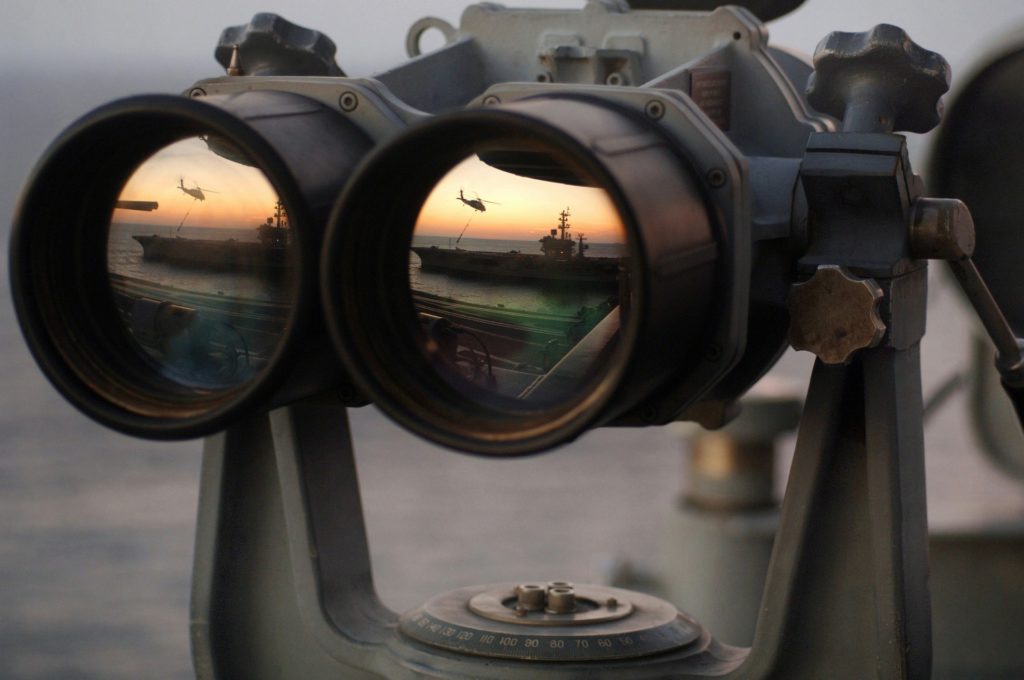
Review Of the Best Binoculars for Long Distance
1. Best Overall
These Nikon high-powered binoculars feature adjustable zoom magnification of between 10-22x that you control using a simple, easy to reach control knob. This means you can adjust the power without having to remove the binoculars from your eyes.
Couple those factors with the 50 millimeters objective lens diameter and 2.3 – 5 millimeter exit pupil, and these optics offer superior performance when it comes to long-range terrestrial viewing. You’ll hardly miss a thing—regardless of the lighting condition.
Thanks to the multi-coated eco glass lenses, there’s hardly any light loss due to reflection. So, the images are clear and brighter. It has a BAK4 Porro prism system that’s highly efficient and affordable.
It comes with an ergonomic design that’s easy to hold and use while you’re out enjoying the outdoors. For one, the interpupillary distance is adjustable in case the eyepieces don’t fit well. Then there are the turn and slide rubber eyecups that you can utilize during lengthy viewing sessions—not to mention the 8.6 millimeters eye relief.
The body is built to last and withstand harsh conditions. Its rubber-armored coating ensures that it doesn’t slip off easily, even if your hands are wet. In case of any issues, Nikon offers a lifetime warranty whereby they’ll repair or replace your binoculars. Provided it’s not a lost or stolen item or has been damaged intentionally.
The only issues you’ll have with these binoculars are minor image distortions when you adjust the magnification to the highest power.
Pros
- Easy to use.
- Adjustable rubber eyecups.
- Multi-coated lenses.
- Lifetime warranty.
- Adjustable interpupillary distance.
- Rubber-armored coating.
Cons
- Image distortion at the highest magnification.
2. Best Value
If you’re looking for long-distance binoculars that will offer you great value, then these optics are your best bet. Its 10x magnification and 42mm objective lens diameter combine to give you sharp and clear images. It features fully multi-coated lenses that offer better light transmission in daylight and low lighting conditions.
With a 15mm eye relief, you won’t have any discomfort while viewing with either eyeglasses or sunglasses. The adjustable eyecups make it easy and convenient for those whose eyes have different specifications. The diopter on the right eyepiece will help you make the correct adjustments.
There’s a center focus wheel for both barrels. To adjust the interpupillary distance of the eyepieces, you simply rotate the barrels in or out to match your eyes’ interpupillary distance.
The aluminum body provides robust protection against the elements. Then you have argon purging and O-ring seals for waterproofing and fog proofing. You can bet this pair of long-range binos is built to last.
Their only drawback is that they can be a little heavy to carry around or hold for extensive viewing. So, you’ll have to use the glass pack harness they come with and invest in a tripod stand.
Pros
- Crisp and clear images.
- Fogproof and waterproof.
- 15mm eye relief for comfortable viewing.
- Rugged body design to withstand impact
Cons
- They can be tiring to carry around.
3. Best for Astronomy
These binoculars don’t disappoint when it comes to performance. One of the best specifications on our list features superior quality BAK4 prisms and multi-coated lenses, so you can expect nothing short of crisp and high-contrast images, whether you’re viewing in bright light or low lighting.
With the 15x magnification, you can comfortably view far-off images, and the 70mm objective lens allows in enough light to guarantee clarity. An angular field of view of 4.4 degrees is enough to view moving objects without moving the binos.
To fine-tune your focus, you have the diopter adjustment that’s easily accessible. Those with eyeglasses will be happy to know about the long eye relief (18mm) and adjustable eyecups. The eyecups have a soft rubber material that’s soft and comfortable. Plus, they help to block any stray light.
The body of these binoculars features a synthetic, water-resistant material that’s highly durable. It has a rugged design for enhanced protection and a non-slip grip. Also, its tripod adaptable.
Due to the bulky size, it will be tough and almost impossible to hold these glasses steady while stargazing or bird watching for long periods. You’ll have to get a tripod to save you from getting tired and the discomfort of leaning your elbows on different surfaces.
Pros
- Clear images even in low lighting.
- Comfortable to use.
- Non-slip rugged grip.
- Longer eye relief.
Cons
- You need a tripod for extended periods of use.
4. Best Compact
Gosky 10x42 Roof Prism Binoculars
Seeing as most high-powered binoculars are bulky, these compact binoculars offer some relief to those who want to enjoy long-distance viewing without the burden of large optics. Their features are meant to provide exceptional performance outdoors, be it stargazing, bird watching, surveillance, or watching a game.
The binoculars come with a 10x magnification power and a wide field of view (307ft/1000 yards). Add that to the 42mm fully multi-layer coated objective lens, 18mm eyepieces and BAK4 prism, and you have the perfect setup for brighter, clear, and crisp images.
The body has a solid, robust, modern design that’s easy to use. A large focus knob is centrally placed for easy accessibility, and the twist-down eyecups allow you to use the binoculars with or without glasses.
The focus is very smooth, and you can adjust it comfortably without moving your eyes from the binoculars.
One of the best perks of these long-range binoculars is the phone mount they come with. This lets you capture the beautiful views of distant places and share them with your friends and family. The mount is compatible with a wide range of smartphone brands, including iPhone, Samsung and Sony, among others. Seeing as the binoculars aren’t bulky, it’s easy to carry them with the phone.
The company offers a lifetime warranty and lifetime technical support that will help you save significantly on repair or replacement expenses. The only issue might be the lack of interpupillary adjustment that will affect those who don’t get binoculars with a good fit.
Pros
- Compact and lightweight.
- Smartphone mount.
- Full multi-layer coating.
- Strong and ergonomic body.
- Smooth focus.
- Lifetime warranty.
Cons
- There’s no interpupillary adjustment.
5. Best for Sports
Bushnell Trophy Roof Binoculars
Get the Bushnell trophy roof binoculars if you’re going out to watch a sport on the field or hunt game and need long-range optics. They’re compact, built for the outdoors, and highly efficient as far as performance goes.
In addition to their 10x magnification power and 42mm objective lens, the binoculars feature fully multi-coated optics and premium BAK4 prisms. These lead to the production of superior quality images and views.
The contrast is extremely sharp, while the focus matches up to the best long distance binoculars.
A 15.2mm eye relief allows you to use the binos comfortably while wearing your eyeglasses or sunglasses. The ergonomic housing comprises Dura-grip rubber armor that cushions against harsh elements and rough handling. Also, the manufacturers utilize the latest waterproof and fog proof technology to attain an IPX7 rating.
The only challenge is that the user manual isn’t clear, so first-time users could have a hard time figuring it out.
Pros
- Simple and easy to use.
- Compact design.
- Waterproof.
- Good eye relief.
Cons
- Unclear user guide.
6. The Best Money Can Buy
If you want the best binoculars money can buy, the Steiner military optics are what you should go for. They feature a magnification power of 20x and an objective lens diameter of 80mm. These two specs boost the binoculars’ performance to the highest level. You can see images that are miles away clearly, as though they’re in front of you.
Add the BAK4 Porro prisms and fully multi-coated lenses, and you now have an optical device that works well during daytime and in low light. With its exit pupil of 7.1mm, you’ll hardly miss any detail of whatever you’re viewing.
Eye relief stands at 13mm, while the field of view is 195 feet at 1000 yards. Then you have the sports auto-focus that allows you to focus the eyepieces individually to prescribed vision.
The binoculars are fully fog proof and waterproof to withstand any harsh weather conditions, thanks to the N2 injection system that helps seal 14-psi high-pressure dry nitrogen into the binoculars’ tubes.
The company offers free repairs and replacements for the entire lifetime of the product.
Due to their bulky size, you’ll have to spend more money on a tripod to mount these binoculars.
Pros
- Auto-focus system.
- Fully multi-coated lenses.
- 7.1mm exit pupil.
- Fog and water resistance.
Cons
- It’s heavy.
- It costs a lot of money.
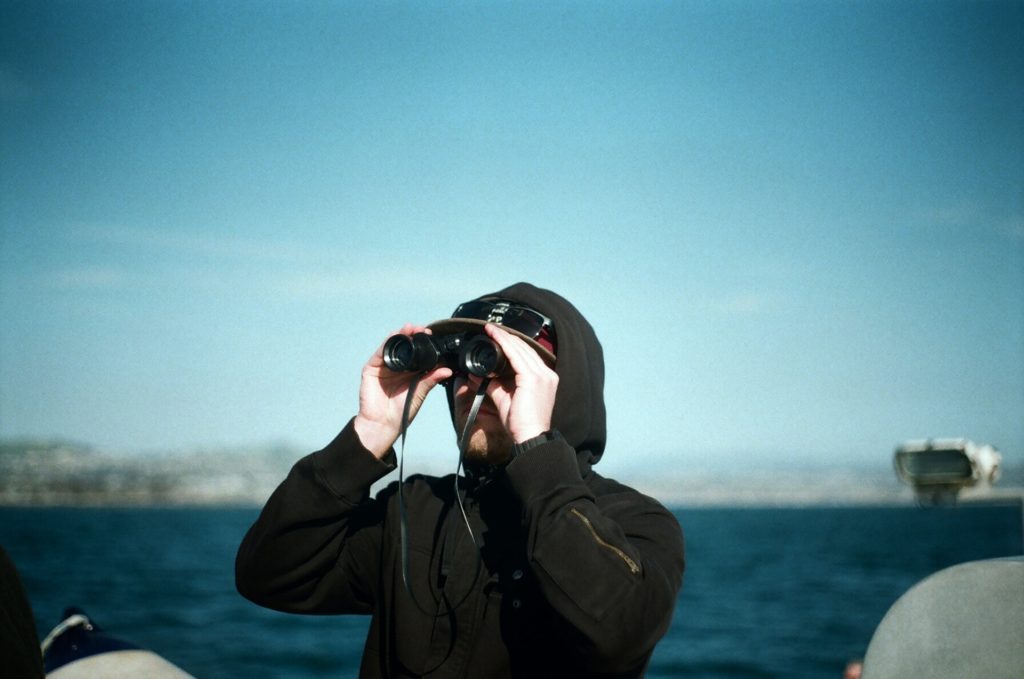
7. Best for Professionals
These are high-power high-cost binoculars for long-distance. They’re ideal for professionals involved in specialized, high-definition observations. With a 15x magnification and 56mm lens diameter, the binoculars produce high-contrast images full of natural colors. You can identify and distinguish objects even in low lighting conditions.
These also boast a wide field of view, significant eye relief, and an amazing ergonomic design that provides a comfortable viewing experience.
The Swarovski Optik is built to last. The body has maximum rigidity, ruggedness, and resilience and can withstand the most challenging outdoor conditions and rough handling.
The binoculars have a strong objective lens, with eyepiece covers to shield those parts from dangerous external factors. The manufacturers have put a lot of thought into safeguarding this optic to maintain its peak performance for a long time.
To prove their trust in the brand, they offer a lifetime warranty for the binoculars and a 10-year warranty for other parts.
The main drawbacks are their bulkiness, making them hard to hold for extended periods, and the high price tag.
Pros
- Ergonomic design.
- Wide field of view.
- Crisp and clear images.
- Strong and durable.
Cons
- Bulky.
- Expensive.
8. Best for Low Lighting
These binoculars feature a lot of high-quality features that make them one of the go-to long-distance optics.
The large objective lens captures as much light as possible to produce bright images even in low light conditions. Next are the multi-layer coatings on the lenses that ensure little to no light is lost during transmission.
Eye relief of 21 is one of the highest, so if you’re wearing eyeglasses, you don’t have to remove them to see the entire field of view.
The solid, rugged body construction makes it easy to hold and use the binos, in addition to safeguarding them against different elements.
Furthermore, the lenses have special protective coatings that repel water, dust, and grease. Not to mention the nitrogen filling to make them weather-resistant.
Seeing as the company has been in the optics industry for close to a century, you can be sure they know what works. With the Pentax SP 20×60, they meet the needs of long-distance binocular users and exceed lots of expectations in the process.
The only downsides are the lack of a warranty and a tripod adapter. So, you’ll have to be careful not to damage them and tolerate the fatigue that comes with holding them for extended periods.
Pros
- A large objective lens captures more light.
- Weather-resistant.
- Protective coating against dust, water and grease.
- Large eye relief.
- Multi-layer lens coating.
Cons
- No warranty.
- Lack of a tripod adapter.
9. Most Versatile
Celestron 71454 Echelon 20x70 Binoculars
These binoculars have superior features that enable them to deliver effortlessly. The first one is the large 20x magnification.
Then there’s the 70mm objective lens that takes care of the light transmission. This large size means there’ll be more light entering, which translates to enhanced brightness of the images.
Even better, the lenses are made of top-quality Japanese glass, and these are paired with BAK4 prisms. All the surfaces are then multi-coated to ensure there’s no light reflection.
These factors combine to give high-contrast, life-like images with a bit of help from the 3.5mm exit pupil.
The binoculars also come with some protective features to shield them from destructive elements.
There’s the aluminum alloy housing that’s both strong and lightweight. The aluminum is then covered with rubber armor. This ensures the binoculars don’t easily slip when held and cushion against hard impact whenever they do.
Celestron has made these fully waterproof, and thanks to nitrogen purge, there’s no chance of fog, dew or moisture entering the optics. When not in use, these binoculars stay safe in a waterproof hard case.
When it comes to performance, these binoculars have an individual eye focus mechanism that lets you adjust each eyepiece as per the required focus for each eye. Because of the 19.5mm eye relief, you can use the optics comfortably, with or without spectacles.
Lastly, the binoculars are tripod adaptable, so you can give your hands a break by mounting the binos on a stand for extended viewing sessions. But, you have to buy the tripod separately.
Pros
- Waterproof and fog proof.
- Strong casing storage.
- Longer eye relief.
- Full multi-coating.
- Individual eye focus.
Cons
- You have to buy a tripod separately.
- The exit pupil could be bigger.
10. Best for Hunting
Vortex Optics Kaibab HD Binoculars
18x magnification, 56mm lens diameter, fully multi-coated lenses, and 194ft/1000 yards field of view are just some of the specifications that make these binoculars ideal for observing long-distance game.
The XR plus anti-reflective coating helps to ensure no light is lost. Next, you have a wide field of view to watch your moving target without adjusting the optics’ position.
To focus your images, use the smooth focus wheel for both tubes or diopter for either of the lenses.
The body comes with rubber armor to provide a firm grip and cushion it from rough handling. O-ring seals and argon purging are responsible for waterproofing and fog proofing the optics.
The shortcoming with these long-range optics is that they’re too expensive for most.
Pros
- Fogproof and waterproof.
- High rate of light transmission.
- Easy to use.
- Non-slip grip.
Cons
- Expensive.
11. Best Price
SkyGenius 10x50 Powerful Binoculars
Wrapping up our review are cost-effective, high-power binoculars that feature 10x magnification and 50mm lens diameter. They also come with a 357ft/1000yards field of view, perfect for viewing moving objects like birds or at a sporting event. The 5mm exit pupil helps you to see the images clearer through the eyepiece.
For those with a focus imbalance in their eyes, there’s a diopter that allows you to adjust the individual lenses accordingly. The focus knob is right at the center of the tubes, where you can reach it with ease. It might take some time to master adjusting the optics to the right setting.
These binoculars use corrective optical coating, where a multi-layer of the coat is applied on the lenses to provide better light transmission and color contrast. The aspherical design of the lens also helps to boost the light transmission further.
With the adjustable eyecups, you’re able to manipulate the eye relief depending on how you prefer to look through the eyepieces—with or without glasses.
The build of these binoculars is robust, with strong, durable rubber armor for anti-slip grip and shock resistance. They are also moisture-proof and resistant to wear and tear.
Whether you want them to watch birds, gaze at stars, hunt, watch sports or use at sea, for the price, these binoculars feel like a steal.
Pros
- Affordable
- Moisture-proof.
- Adjustable eyecups.
- Central control knob.
Cons
- Properly adjusting the binoculars could take time.

Conclusion
From the reviews, we have the Nikon 8252 Aculo Nikon 8252 Aculon A211 10-22x50 Zoom Binoculars as our overall best binoculars for long-distance. We like them because they’re high-powered binoculars that you can carry around and use for whatever your choice of long-range viewing is—plus, they perform well in low lighting.
If you need help to make the right choice for you, follow our guide on what to look for in the best long-range binoculars. Remember to care for the binoculars properly so that they remain in tip-top condition.














